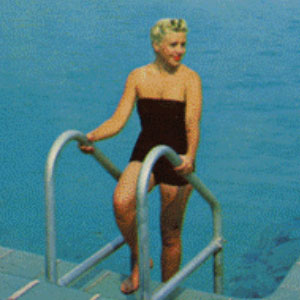
929Kviews
30 Of The Most Interesting Historical Photos From ‘Historyinmoment’ Twitter Page
The most pivotal moments throughout history have always been captured through photography and help us remember our past - but what about the every day or intimate moments that tell simpler stories? Fashion, entertainment, technology have all evolved over time and the Twitter page @historyinmoment is dedicated to sharing "historical photos and quotes from the past," so people can learn or reminisce about times past.
Highlighted in these vintage photos are not just artifacts that are long gone, but how no matter the era certain things stay the same such as the love for family and relationships that keep us going. Scroll down for a nostalgia series of interesting photos and don't forget to upvote your favs!
This post may include affiliate links.
Hachiko was an Akita who belonged to Professor Eizaburo Ueno who lived in the Shibuya neighborhood of Tokyo and taught at the city’s Imperial University during the early 1920s. The pair followed the same routine every day: the professor would walk to Shibuya Station with Hachiko, take the train to work, and after he finished the day’s classes, take the train back and return to the station at 3 PM on the dot. Hachiko would wait for the professor at the station to walk him home until one day, the man suffered a stroke and never arrived. Until the dog's death, he showed up and waited for his master to return.
Long before the tradition of Samurai became known by the Western World as solely male, there existed a group of female samurai - the Onna-bugeisha. They followed the same training as the men and were even given a weapon designed for their smaller stature called a Naginata. One of the first female samurai warriors was Empress Jingu, who organized and led a conquest of Korea in 200 AD.
The American parenting advice industry began in the 1920s and 1930s, which preached an authoritarian approach to child-rearing. According to those theories, children were expected to do as they were told or else be punished. Parents were encouraged to follow a strict system of punishments and rewards or it was believed that children would get out of control. In the 1940s, these ideas were disputed by the work of John Bowlby who focused on affectionate attachment.
During the Cold War, the United States sent various jazz musicians as ambassadors on goodwill tours around the world. For his part, Louis Armstrong went to Egypt in 1961 where this iconic photo of him playing for his wife Lucille was taken. When asked why he was going to play for opposing religious groups, he responded, "Let me tell you something, man. That horn”, pointing to his prized instrument, “You see that horn? That horn ain’t prejudiced. A note’s a note in any language.”
The Islamic Revolution of 1979 created a volcanic cultural shift in Iran, especially for women. A country that now arrests women for not wearing a Hijab (headscarf) was once known for its liberal ideologies. The old Shah banned the veil in the 1930s and ordered police to forcibly remove headscarves. But in the early 1980s, the new Islamic authorities enforced a mandatory dress code that made it compulsory for all women to wear the hijab.
In the early 20th century, traders and missionaries were accompanied by the Royal Canadian Mounted Police (RCMP). Much of the lands occupied by the Inuit were not sought-after land. However, after the more accommodating lands had been settled into, they moved into the outskirts. By the late 1920s, every Inuit community had come into contact with either traders, missionaries, or government agents. In 1939, the Supreme Court of Canada decided that the Inuit should be considered Indians and fall under the jurisdiction of the federal government.
This photo shows cats waiting for Greek fishermen in 1970. The Greek islands are known for being inundated with stray cats that are protected by the government and cat charities. The warm weather, an abundance of food, and low neutering rates have led to cat-filled islands - which the locals have a good relationship with.
Charles B. Tripp (July 6, 1855 – January 26, 1930) was a Canadian-American artist and sideshow performer known as the "Armless Wonder". Born in Woodstock, Ontario, Tripp was born without arms but learned how to use his legs and feet to perform daily tasks.
Eli Bowen (October 14, 1844 – May 4, 1924) was an American sideshow performer known as "The Legless Wonder", or "The Legless Acrobat. "He was born with a genetic disorder called phocomelia, which caused his feet to be attached to his hips - or so-called "seal limbs." He learned how to walk on his hands with the use of wooden blocks, and soon built enough strength in his torso to start experimenting with acrobatics.
The first orphanage established in the United States was in 1729. By 1850, there were 56 of these institutions; and by 1900, there were an estimated 1,000 orphanages throughout the country where an estimated 100,000 children lived. The conditions in orphanages were disturbing and in the early 1900s, activists began a movement to shut them down and send unaccompanied children to foster families instead of institutions.
Marilyn Monroe (born Norma Jeane Mortenson; June 1, 1926 – August 4, 1962) was an American actress, model, and singer. She became one of the most popular actresses for a decade (the 1950s and early 1960s), with her films grossing $200 million (equivalent to $2 billion today). Known for her ability to mix comedy and sex appeal, she was the icon for the changing attitudes towards sexuality at the time. 1955 was the year her most famous white halter dress stole the show in the feature film, "The Seven Year Itch."
The 19th amendment granted women the right to vote and was passed by Congress on June 4, 1919, and ratified on August 18, 1920. In the 1800s, women began to organize, petition, and picket in order to win their right to vote. It took women decades to accomplish their goal, between 1878, when the amendment was first introduced in Congress
according to Wikipedia, both skeletons were proved to be male so it's safe to assume they were likely killed for being gay. Very sad.
The 1940s to 1980s was the 'golden age of news for newspaper owners, as money-makers, and journalists to make news. But this golden age title was reserved for a certain group of people. Minority groups and women had little opportunity to see themselves represented in news or to contribute to it.
The Beatle's Abbey Road cover was photographed by freelance photographer Iain Macmillan, a friend of John Lennon and Yoko Ono. He used a Hasselblad camera with a 50mm wide-angle lens, aperture f22, at 1/500 seconds. Macmillan stood on a stepladder in the middle of the road and snapped six shots of the group as they walked across the road outside the studio.
Am I the only one who is a bit disturbed by the "need" to use the word actual in the title? Are we really so deep in memes and photomanipulation that we need to stress that yeah, this guy really was there doing that?
Could BP stop removing pic please? It's incredibly frustrating when trying to show my friend somthing I found in an article.
Wonderful pictures. It's a good compilation - not only of famous individuals but also unknown people. Was a very interesting gallery to watch.
I wasn't a fan of Amy Winehouse's music, but damn, that photo of her is just haunting. She looks so pained, so scared, so, well, haunted. It made me even more sad at her untimely passing.
Could BP stop removing pic please? It's incredibly frustrating when trying to show my friend somthing I found in an article.
Wonderful pictures. It's a good compilation - not only of famous individuals but also unknown people. Was a very interesting gallery to watch.
I wasn't a fan of Amy Winehouse's music, but damn, that photo of her is just haunting. She looks so pained, so scared, so, well, haunted. It made me even more sad at her untimely passing.




































